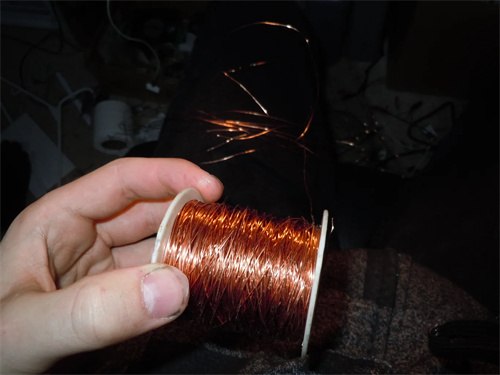How Do You Know If a Wire Is Enameled?
Introduction:
Wires play a crucial role in various electrical and electronic devices, serving as conduits for the flow of electricity. In certain applications, wires are coated with enamel to provide insulation and protect them from environmental factors. However, determining whether a wire is enameled or not can sometimes be challenging. In this blog post, we will explore the characteristics and methods to identify whether a wire is enameled, allowing you to make informed decisions when working with wires in your projects.
Understanding Enameled Wire:
Enameled wire, also known as magnet wire, consists of a conducting core, typically copper, covered with a thin layer of enamel insulation. This insulation provides electrical and thermal protection, preventing short circuits and enhancing the wire's durability. Enameled wires are commonly used in applications such as motors, transformers, inductors, and other electrical components.
Visual Inspection:
One of the initial steps in determining whether a wire is enameled involves a visual inspection. Here are a few key factors to consider:
Color:
Enameled wires usually come in various colors, such as red, green, blue, or natural copper color. The color depends on the specific type of enamel used. If you notice a consistent, solid color on the wire's surface, it is likely enameled.
Glossy Appearance: Enameled wires often have a glossy or shiny finish. This characteristic sets them apart from bare or uninsulated wires, which typically have a dull or matte appearance.
Smooth Texture: Run your fingers along the wire's surface. Enameled wires tend to have a smooth texture due to the presence of the enamel coating. In contrast, bare wires may feel rough or uneven.
Lack of Conductivity: Since enamel acts as an insulator, an enameled wire should not conduct electricity when connected to a power source. You can use a multimeter set to resistance mode to test for conductivity. If the wire exhibits high resistance or an open circuit, it is likely enameled.
Heat Test:
Another method to identify an enameled wire involves subjecting it to heat. The enamel insulation on enameled wires has a higher heat resistance compared to the wire's core. Follow these steps to perform a heat test:
Select a small section of the wire that is not crucial for your application.
Using a heat source such as a lighter or a soldering iron, gently heat the wire for a few seconds.
Observe the wire's reaction to heat. If the wire remains unaffected or shows minimal change, such as slight discoloration or charring, it is likely enameled. However, if the wire melts or exhibits significant damage, it is not enameled.
Professional Verification:
If you still have doubts about the wire's enamel insulation, it is advisable to seek professional assistance. Electricians, electrical engineers, or individuals experienced in working with wires can provide expert opinions and use specialized tools to analyze the wire's properties accurately.
Conclusion:
Identifying whether a wire is enameled or not is crucial for various electrical and electronic projects. By considering visual characteristics such as color, appearance, and texture, as well as conducting a heat test, you can make an informed determination. Remember, if you're unsure about a wire's properties, it's always wise to consult professionals to ensure the safety and reliability of your electrical connections.
